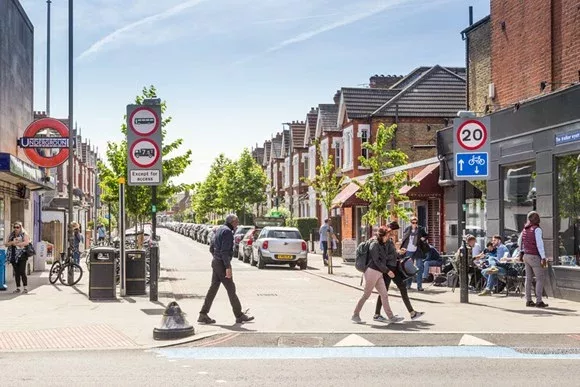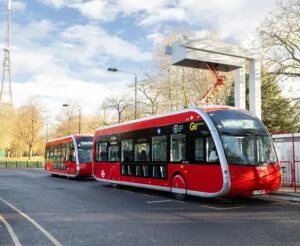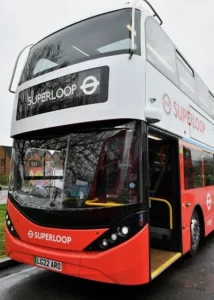Transport for London (TfL) has launched its Vision Zero Inequalities Dashboard tool, creating a new map of London that shows the stark levels of road traffic injury inequality in the capital. The pioneering new tool is the first of its kind in Europe and shows how deprivation is linked to higher road casualty levels, reinforcing the need to target investment and improvements to protect those most vulnerable.
The dashboard enables users to filter the data on the relationship between deprivation levels and road casualties by year, borough, casualty severity and mode of travel, while the mapping function makes it easier to explore areas of higher casualty or casualty location rates. The risk of death and serious injury on London’s roads is an urgent public health issue and these tools will allow users to identify areas and issues that most urgently need to be addressed.
Casualty data available runs from 2017 up to the end of 2022 and will be updated annually. Remaining data covering this time period on age and gender will be added later this year. London collision data is collected by the Metropolitan Police Service (MPS) and the City of London Police (CoLP) or reported to the police by members of the public.
TfL will use the data from this dashboard to inform its own investment priorities and provide this data to boroughs to develop their Local Implementation Plans (LIPs). TfL has met and shared the findings of this dashboard with the boroughs with the top five highest casualty rates and top five highest casualty location rates. TfL will continue to work with boroughs and stakeholders to analyse the cause of inequalities in road injury, help target future road danger reduction programme planning and investment for infrastructure schemes and drive further action to reduce road danger inequalities and make London’s streets safer. The Mayor of London is committed to creating a fairer, more equal and integrated city as set out in the Healthy Streets approach within The Mayor’s Transport Strategy.
The dashboard complements the Inequalities in road danger in London (2017-2021) report, published earlier this year, which focused on two areas, the collision location and the demographic characteristics of the people who are injured. This report found that in London the more deprived the area, the higher the risk that someone travelling in that area will be seriously injured or killed in a road traffic collision in that area, with the 30 per cent most deprived postcodes having more than double the number of casualties per kilometre of road network compared with the least deprived 30 per cent. The report found that the same is also true for people living in London’s more deprived areas who are travelling in London as a whole. The more deprived the area someone lives in, the higher the risk they will be injured or killed in a road traffic collision wherever they are travelling in London, with people from the 30 per cent most deprived home postcodes having nearly double the risk of people from the least deprived 30 per cent. The dashboard shows that the data for people killed or seriously injured (KSI) in 2022 continues to show these trends.
Lilli Matson, TfL’s Chief Safety, Health and Environment Officer, said: “We’re delighted to publish this valuable new tool to enable people to see where and how action most needs to be taken to reduce road danger and inequality in London. The interactive dashboard displays crucial information on the relationship between deprivation levels and road casualties in London. Protecting everyone on the road is a priority for us and we will continue to research how road risk varies for certain groups of Londoners and engage with boroughs, police and other stakeholders to reduce these inequalities. Without safe streets we know that people won’t choose the most healthy and sustainable modes of transport and there is still much more to do to eradicate road deaths and serious injuries. We are determined to make London a greener, more sustainable and safer city for everyone.”
Jeremy Leach, Action Vision Zero, said: “Poorer communities face much greater risk when using the roads. Now though, communities and campaigners across London have a powerful new tool to help them to tackle road danger and make walking and cycling safer. TfL’s new Inequalities Dashboard helps people to pinpoint places where risk is higher and demand action from their local Councillors and their borough.”
Deputy Leader Cllr Rezina Chowdhury, Cabinet Member for Sustainable Lambeth and Clean Air, said: “Lambeth Council welcomes this move because in our borough people who live in deprived areas are nearly three times more likely to suffer an injury or be killed in a road collision.
“Our road danger reduction strategy, which was published in November, sets out how we will tackle this stark inequality, and the new Vision Zero Inequalities Dashboard will help us, and other London borough’s collect the essential data needed to track progress.
“Road danger is a social justice issue, and we are past the point where it’s enough to just ask motorists to slow down or pedestrians to look both ways when crossing a road. It is about making sure in the future streets are designed with road safety built-in, making them more equal and less dominated by motor traffic.”
TfL remains committed to its Vision Zero goal to eliminate death and serious injury from London’s roads and transport networks by 2041. The dashboard represents one of TfL’s commitments in the Vision Zero Action Plan progress report and demonstrates the vital importance of improving access to safe roads and travel options for everyone, but particularly for those in more deprived areas.
TfL is working in partnership with the boroughs, police and other stakeholders to directly tackle road danger and continues to work on a number of major programmes to make London’s roads and the vehicles using them safer. TfL and boroughs continue to expand London’s strategic cycle network at pace, with 24 per cent of Londoners now living within 400m of the network, up from 5 per cent in 2016. Construction works continue on Cycleway 50, Cycleway 23 and Cycleway 4, with many more routes being developed in partnership with boroughs. TfL has also continued to work on its Safer Junctions programme to make life-saving changes at some of the capital’s most dangerous and intimidating junctions. This programme has so far reduced danger at 44 junctions across London, with work on the junction of Lambeth Bridge/Millbank set to start later this year.

























